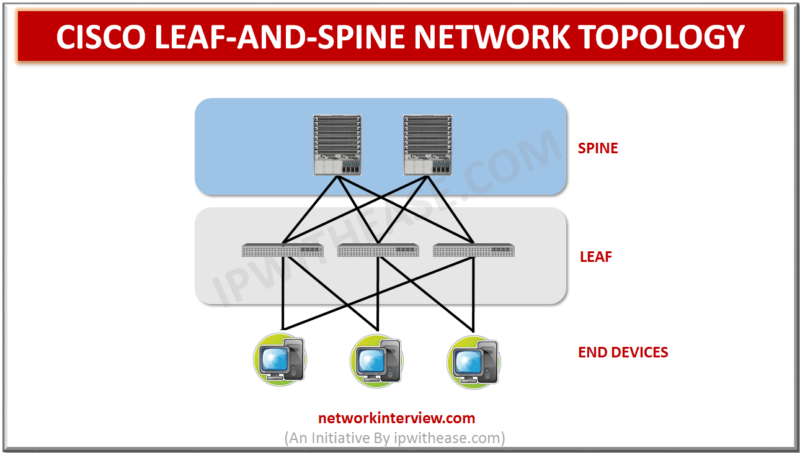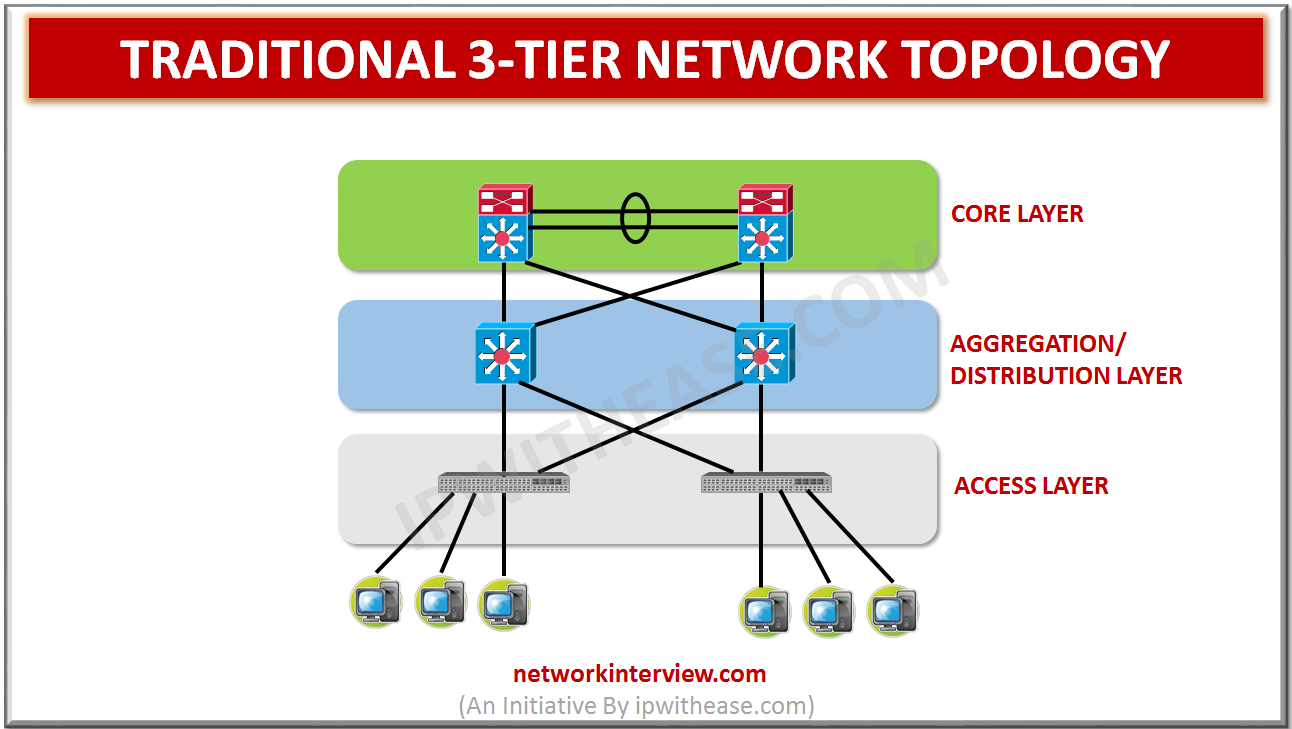
Cisco Leaf and Spine Topology
Network Topology
Leaf-and-spine is a two-layer network topology composed of leaf switches and spine switches.
We are all aware of the Cisco’s 3-tier network topology with the following 3 layers –
1)Access Layer
2)Aggregation/Distribution Layer
3)Core layer

- The Access Layer connects to the end devices (e.g. clients and servers).
- The Aggregation/Distribution Layer redundantly interconnects Access Layer switches, and provides redundant connections to the campus backbone (i.e. the Core Layer).
- The Core Layer then provides very fast transport between Aggregation/Distribution Layer switches.
However, when we talk about leaf-and-spine network topology, it is a 2-tier network topology The topology is composed of –
1) Leaf switches (connected to the end devices e.g. clients and servers) representing the Access Layer , and
2) Spine switches (to which leaf switches connect) replacing the Aggregation/Distribution layer and Core Layer.
Leaf switches mesh into the spine, forming the access layer that delivers network connection points for servers. Each leaf switch connects to every spine switch. As a result, there’s no need for interconnections between spine switches.
It is useful for data center that experience more east-west network traffic than north-south traffic and caters scalable over-subscription ratios.



